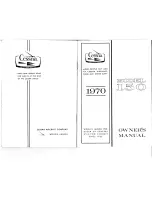
Aircraft Operating Instructions (AOI)
Type:
CT
Series:
CTLS
LSA
Page: 3-10
AU 010 11000
Revision No. 4
Date: 29 Apr 2008
3.11. Failure of flap control
The flap motor is activated by a controller which allows the preselection of the
desired flap position. The flap position is indicated digitally.
In principle, the CTLS can be landed irrespective of flap position. However, with
negative flaps, the stall speed is higher and the resulting landing distance longer.
When in doubt, an alternate airfield with a longer runway should be chosen.
Recommended approach speed with flaps 0° is 100 km/h - 54 kts. With flaps -6° the
recommended approach speed increases to 120 km/h – 64 kts.
Should the control unit fail (not the motor), the electronic control of the flap motor
should be reset. This is achieved by switching the alternator switch and the master
switch off and then on again. It is safe to do this in flight as engine ignition is
independent from the aircraft’s power supply. Should this not work, the flaps can be
set manually by moving the flap selection lever past the detent, up or down.
To set the flaps to negative, the flap lever is moved past and above the -6° position.
Once the desired setting has been reached, the lever is returned to the -6° position.
The flaps remain in the set position.
To set the flaps to positive, the flap lever is moved past and below the +35° position.
Once the desired setting has been reached, the lever is returned to the +35° position.
The flaps remain in the set position.
Warning:
If the lever is not returned from the manual position, the flap motor
continues to run until the end position is reached.
Warning:
As the flap position is no longer regulated by the controller, the pilot
must ensure that airspeeds for flight with flaps extended are not above
the limits shown on the flap lever placard.








































